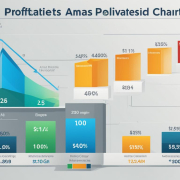Understanding What is M&A: A Brief Guide
As I delve into the intricate world of mergers and acquisitions, or M&A as it’s commonly known, I find it crucial to address the complexity surrounding these strategic business maneuvers. Mergers and acquisitions stand as pivotal milestones in the corporate realm, offering varying pathways to growth, efficiency, and competitive enhancement. This guide serves to illuminate the M&A definition, its inherent strategies, and the spectrum of benefits of mergers and acquisitions. Whether you are an entrepreneur, a seasoned professional, or a curious onlooker, comprehending M&A strategies is essential in appreciating its transformative impact on the business landscape.
Key Takeaways
- Demystifying mergers and acquisitions as pivotal elements reshaping business infrastructures.
- Exploring the multifaceted nature of M&A, including both the buy and sell sides.
- Understanding the intricate M&A strategies employed for successful financial transactions.
- Assessing the comprehensive benefits of mergers and acquisitions for businesses large and small.
- Gaining insights into the influence and significant changes that M&A activities impart upon the global market.
- Gleaning professional perspectives on the planning, execution, and long-term repercussions of M&A.
Introduction to Mergers and Acquisitions
When I delve into the realm of mergers and acquisitions (M&A), I’m exploring a world where businesses consolidate to form more robust, efficient entities. Broadly speaking, this involves either a merger—where two businesses blend into a single corporate entity—or an acquisition, where one business absorbs another. The overarching aim of M&A typically revolves around creating a more competitive and value-driven company.
Mergers and acquisitions can dramatically alter the business landscape, providing myriad benefits such as enhanced operational efficiency and an expanded market reach. However, the impact of M&A goes beyond just the corporate gains; it affects stakeholders, the industry, and occasionally, the economy at large.
To understand what is M&A, it’s crucial to dissect the various M&A terms that define the field. This knowledge equips us to not only comprehend the intricate details of these transactions but to appraise the M&A explained proceedings with a clear lens on potential benefits and impacts.
Mergers and Acquisitions represent the zenith of corporate strategy, embodying growth aspirations and operational ambitions on a grand scale.
Let’s examine the common terms you’ll encounter in M&A:
| Type of Transaction | Description | Potential Impact |
|---|---|---|
| Merger | Two companies voluntarily unite, share resources, and operate as a single legal entity. | Can lead to market dominance and capitalize on combined strengths. |
| Acquisition | One company outright purchases another, bringing it under its control. | Might rapidly extend market presence and provide strategic advantages. |
| Consolidation | Combines companies into a new entity, often to consolidate market share. | Streamlines operations and can generate significant cost synergies. |
Each M&A deal is unique, dictated by strategic goals, industry conditions, and the entities involved. Thus, the mergers and acquisitions impact fluctuates, presenting varying degrees of change for employees, shareholders, customers, and competitors.
What is M&A
As a professional in the business world, I’ve observed that M&A is a term that often sparks interest and curiosity. Short for mergers and acquisitions, it represents a pivotal area in the corporate strategy that can reshape industries, redefine market leaders, and create new opportunities. Having a solid grasp of the M&A process is crucial for companies considering growth through these transactions.
Defining M&A in the Business Context
The essence of an M&A process rests on pivotal synergistic decisions made by an acquiring company to align with another business’s resources, capabilities, or market presence. It’s a complex journey that includes evaluating potential targets, conducting thorough due diligence, and crafting a strategy that’s beneficial for both the acquiring and acquired company. This process can lead to transformative growth and competitive advantage when executed effectively.
Difference Between Mergers and Acquisitions
Oftentimes, the terms merger and acquisition are used interchangeably, but there are distinct differences between the two. A merger involves two firms agreeing to advance as a single entity, typically implying a more egalitarian approach. Alternatively, an acquisition usually denotes a larger, acquiring company taking ownership of a smaller, acquired company, positioning themselves as the new owner and sometimes overtaking the company’s operations.
Being immersed in the dynamics of contemporary corporate developments has allowed me to analyze various dimensions of M&A activity, from the careful consideration of an acquisition to the delicate balance required to ensure that a merger truly augments the strengths of both entities involved.
The M&A Process Explained
Mergers and acquisitions, frequently abbreviated as M&A, represent a complex realm of business strategy that encompasses a multitude of steps, each as critical as the next. To demystify the intricate procedures involved, we must delve into the M&A lifecycle, dissecting each phase to reveal the strategic underpinnings that facilitate successful deals. From the early stirrings of M&A planning to the triumphant closure of deals, a myriad of components must harmoniously align.
Overview of the M&A Lifecycle
The M&A lifecycle begins with a vision, a meticulously crafted blueprint that outlines the prospective paths a company might take to achieve consolidation or expansion through acquisition. This foresight is not merely a wish list; it is anchored in pragmatic analysis of market conditions and internal company goals.
During this embryonic stage, it is essential to set forth the M&A search criteria, pinpointing potential candidates that align with the company’s strategic imperatives. Such criteria may vary widely, from financial metrics to cultural fit, forming the underpinnings of the search process.
Key Steps in Successful M&A Transactions
Embarking on a successful M&A transaction is akin to navigating through a labyrinth; meticulous due diligence is the thread that guides us through. This critical investigation transcends mere financial scrutiny, delving into legal, commercial, and operational due diligence, ensuring no stone is left unturned.
Each component in the success of an M&A transaction is interdependent. The precision of due diligence begets the accuracy of valuation, which, in turn, paves the way for efficient negotiations, ultimately culminating in the momentous closing of M&A deals. It is a domino effect, where the alignment and execution of each phase are pivotal. Inadequacies or oversights in one phase can ripple through to the closing stages, potentially derailing years of painstaking planning and strategizing.
The table below encapsulates the essential steps that punctuate the M&A process. These conjunctive stages reflect a journey, illustrating the rigors and triumphs of clinching a deal.
| Phase | Main Activities | Crucial Considerations |
|---|---|---|
| Initiation | Setting objectives, scouting for targets | Strategic fit, market analysis |
| Planning | Defining search criteria, preliminary valuation | Financial capability, integration potential |
| Due Diligence | Comprehensive evaluation of target | Legal compliance, financial health, operational efficiency |
| Negotiation | Terms defining, deal structuring | Value proposition, bargaining power |
| Closing | Finalizing contracts, executing transfer | Regulatory approvals, stakeholder communication |
| Integration | Consolidation of entities, culture alignment | System unification, employee onboarding |
The dance of M&A is intricate, resolute, and often unpredictable. But with a keen eye set on the nuances of planning and due diligence, and by steadfastly adhering to a structured approach, the closure of M&A deals can signify the commencement of a new, more prosperous chapter for the entities involved. It’s an endeavor where the prize justifies the complexities of the process.
Benefits of Mergers and Acquisitions
When companies engage in mergers and acquisitions (M&A), they unlock a range of advantages that can drive their business to new levels of success. The benefits of M&A are far-reaching, often resulting in a transformation that can enhance value creation and position the newly formed entity for a more competitive stance in the marketplace.
Enhancing Market Reach and Efficiency
One of the most compelling M&A advantages is the ability for companies to expand their market reach. Through strategic acquisitions or mergers, businesses can tap into new geographic territories and customer segments. This expansion isn’t just about size; it is about the efficiency gains through streamlined operations and economies of scale that can significantly reduce costs while boosting overall market efficiency.
Synergy: The Driving Force Behind M&A Success
Synergy in M&A is the concept I find most fascinating. It’s the idea that the whole becomes greater than the sum of its parts. When two companies combine forces, the efficiency and effectiveness of their operations can increase exponentially. The realization of synergies can manifest in various forms, such as cost savings, increased revenue, and the sharing of expertise and technology among the unified companies.
| Pre-M&A | Post-M&A | Synergistic Gains |
|---|---|---|
| Independent Operations | Consolidated Management | Streamlined decision-making |
| Limited Market Presence | Expanded Reach | Access to broader customer base |
| Higher Individual Costs | Combined Resources | Economies of scale |
| Separate Brand Identities | United Brand Power | Enhanced brand recognition |
| Competing for Market Share | Market Leadership Position | Increased bargaining power |
Beyond mere financial metrics, the true value lies in the strategic positioning post-M&A. Corporations aiming for long-term dominance are often the architects of such forward-thinking mergers and acquisitions. Their visionary approach and pursuit of market efficiency pave the way for an optimized business model capable of withstanding the ebb and flow of economic changes.
Strategies Behind Pursuing M&A
As a professional in the world of business, I’ve observed that companies are increasingly harnessing M&A strategies to foster growth and gain a competitive edge. Through strategic M&A examples, we can elucidate myriad objectives which guide corporations towards such monumental decisions. M&A objectives usually align with long-term business goals and can profoundly reshape a company’s future.
Common M&A Goals and Objectives
Understanding M&A objectives is crucial, as these juxtapose the ethos behind every merger or acquisition. One primary aim is accelerated growth; businesses often seek to tap into new markets or segments that were otherwise unattainable. Improving operational efficiency by streamlining processes and achieving cost reduction is also a staple goal in M&A in business. Furthermore, M&A can help in diversifying product offerings or acquiring leading-edge technology and talent, ushering in an era of innovation and enhanced service delivery.
Examples of Strategic Mergers and Acquisitions
Real-life strategic M&A examples, such as the prominent acquisition of LinkedIn by Microsoft, spotlight how meticulously set goals and a phased execution approach are imperative for success. This deal was emblematic of Microsoft’s strategy to bolster its B2B segment, manifesting in expanded networking and professional services. Let’s delve deeper into the major types of strategies employed in M&As:
- Horizontal M&A: This is when a company acquires or merges with another in the same industry. The objective here is to reduce competition and increase market share.
- Vertical M&A: It’s an integration of companies in the same value chain, designed to control more of the production process and enhance supply chain efficiencies.
- Market-Extension Merger: Different companies with similar products but different markets come together to penetrate new customer bases.
- Product-Extension Merger: Companies selling different but related products in the same market merge to merge their product lines under a single brand umbrella.
- Conglomerate M&A: This happens between companies in unrelated business activities, aimed at diversification to reduce risk exposure.
These strategic initiatives show that M&A is not a mere acquisition of assets but a deliberate step towards achieving a preconceived blueprint for business evolution.
In my analysis of strategic mergers and acquisitions, I’ve found that behind every successful deal is a meticulously planned strategy focused on specific objectives. This trend underscores the critical need for deliberate purpose and comprehensive due diligence to realize the anticipated value of M&A.
In summary, M&A strategies play a pivotal role in the trajectory of modern businesses. They represent calculated maneuvers designed to position companies for enhanced growth, operational excellence, and long-term profitability in an increasingly competitive marketplace.
Executing an M&A Deal: Best Practices
When I delve into the world of mergers and acquisitions, I take it upon myself to adhere to a set of best practices that can mean the difference between a seamless transaction and a cumbersome ordeal. Grasping the complexity of M&A execution is crucial, as each deal brings its unique set of challenges. Below, I will explore the nuances of managing such complexities and outline the financial considerations vital to any M&A operation.
Navigating the Complexities of an M&A Transaction
My approach to mastering complex M&A transactions involves a blend of strategic preparation and an awareness of the dynamic market environment. This mix is essential to surpass the hurdles that typically surface during a deal. I emphasize close collaboration with adept legal and financial advisors, who bring invaluable expertise to the table. An understanding of the legal landscape, for instance, antitrust laws and regulations, could potentially make or break the deal.
Financial Considerations During M&A Execution
Securing the finances for an M&A deal is often an intricate dance that involves several key players and funding methods. With M&A deal financing, I have found that determining the cost of capital and the most beneficial financial structure is of utmost importance. This can include a mix of equity, debt, and hybrid instruments, each with its pros and cons depending on the company’s leadership and strategic goals. Below is a table that summarizes some financial strategies commonly employed in M&A.
| Financing Method | Advantages | Disadvantages | Best Used When |
|---|---|---|---|
| Equity Financing | No repayment obligation | Possible dilution of control | Companies have strong share value |
| Debt Financing | Tax-deductible interest | Increased financial risk | Interest rates are low |
| Hybrid Instruments | Flexible terms | Can be complex to issue | Seeking balance between equity and debt |
Let’s not overlook the tactical aspect of an M&A deal. Timing is everything. Developing sharp instincts for the right time to strike, coupled with rigorous planning and adherence to M&A best practices, positions a company to efficiently capitalize on market opportunities while steering clear of pitfalls. This might involve adjusting to market volatility and even delaying closing dates to harness more favorable conditions.
Tethered to every consideration is the need for due diligence, negotiating prowess, and an intimate understanding of rival bidders’ tactics. Integrated in the fabric of M&A success is the art of balancing patience with assertiveness, ensuring that the resulting deal benefits all parties involved.
Decoding M&A Terminology
In my experience of exploring the world of mergers and acquisitions, a solid grasp of M&A terminology is crucial for anyone looking to navigate this complex field successfully. Whether you’re delving into a leveraged buyout or crafting the terms of a statutory merger, understanding the language of M&A can make a significant difference to the success of a deal.
Common M&A Terms Explained
An encounter with terms such as joint venture and asset deal is inevitable. A joint venture occurs when two parties, usually companies, agree to combine resources for a particular project or business activity, sharing revenues, expenses, and control. An asset deal, on the other hand, involves the purchase of a company’s assets, allowing the buyer to select specific assets and liabilities they wish to acquire, as opposed to the entirety of the company.
Share exchanges are also pivotal in M&A discussions, referring to a situation where the ownership stakes are exchanged between the entities involved in an M&A. The intricate design of these deals is more than a mere transaction; it’s a strategic dance that necessitates careful choreography to produce maximized outcomes for all stakeholders.
Legal and Valuation Terms in M&A
Further delving into M&A, I’ve learned the importance of understanding the valuation mechanics commonly applied during these processes. Valuation terms often include methodologies such as a discounted cash flow (DCF) analysis, which aims to determine the value of a company based on its future cash flow projections, discounted to present value. This analysis can be quite complex, integrating considerations such as weighted average cost of capital (WACC) and terminal values.
Legally, a statutory merger describes a merger that is conducted in accordance with the corporate statutes of the involved entities’ jurisdictions, which is designed to ensure that the merged entity adheres to all legal requirements and protections. The attention to detail required in these legal proceedings isn’t for the faint of heart, but is essential for the legitimacy and long-term sustainability of the merger.
It’s important to remember that an adept understanding of M&A terminology not only aids in negotiating and executing a transaction but can also provide deeper insights into the strategic imperatives behind M&A activities. A leveraged buyout (LBO), for instance, may reveal a more aggressive acquisition strategy involving significant amounts of borrowed funds, whereas a joint venture might hint at more conservative, collaborative growth objectives.
With these terms and knowledge firmly in place, one can confidently stride into the sphere of M&A, prepared to broker deals, forge alliances, and navigate complex transactional dynamics with finesse.
Key Players in M&A Transactions
The success of mergers and acquisitions (M&A) relies heavily on the key players involved. These individuals and teams bring strategic insight, financial expertise, and legal acumen to ensure that every stage of the process is navigated with precision. Let me delve a little deeper into the roles they play and why they’re indispensable to the M&A world.
The Crucial Role of CEOs and CFOs in M&A
When it comes to steering the ship through the turbulent waters of M&A, the CEO and CFO are at the helm. The CEO drives the strategic vision behind the transaction, making sure it aligns with the company’s goals and shareholder interests. Meanwhile, the CFO plays a critical role in M&A operations, pivotal in assessing the financial implications, weighing the costs against the anticipated benefits, and overseeing the intricate due diligence necessary for informed decision-making.
How Consultants, Bankers, and Legal Teams Facilitate M&A
M&A consultants, investment bankers in M&A, and legal advisors form the backbone of the M&A advisory world. These professionals have an acute eye for valuation and due diligence details. Investment bankers, in particular, not only structure the deal and negotiate the terms but also provide the financial analyses that underpin these decisions. They work closely with legal teams who ensure the transaction complies with all regulatory requirements, keeping antitrust concerns and corporate laws in check.
Here’s a snapshot of the distinct roles these advisors play:
| M&A Key Players | Roles and Responsibilities |
|---|---|
| CEOs | Provide strategic direction, oversee the deal from a high-level perspective, and ensure alignment with company vision and shareholder value. |
| CFOs | Manage financial assessments, risk analysis, and due diligence; advise on the optimal structuring of finance for the deal. |
| M&A Consultants | Offer external insights into market trends, assist in valuation, and often bridge gaps in a company’s internal capabilities during a deal. |
| Investment Bankers | Structure the deal, negotiate terms, manage the sale process, provide valuation scenarios, and assist with raising capital if required. |
| Legal Advisors | Handle the legal due diligence, ensure compliance with corporate and antitrust laws, and assist with drafting and reviewing contracts. |
Understanding the expansive and interconnected roles of these experts is essential. As a professional in the M&A arena, I’ve seen firsthand how these key players collaborate to shepherd deals to successful closures. The complexity and stakes of M&A transactions demand nothing short of excellence from these pivotal contributors.
Reading between the Deals: Notable M&A Examples
Throughout the dynamic landscape of corporate mergers and acquisitions, certain deals stand as benchmarks for strategy and value creation. As a witness to these developments, I have learned that M&A examples like Microsoft’s LinkedIn acquisition not only demonstrate the financial might but also the strategic foresight of corporations. This $26.2 billion deal is a quintessential example of a tech giant expanding its portfolio and enhancing its offerings in the professional network space.
Another exemplary case in the realm of notable M&A transactions was the move by Manulife Financial Corporation to acquire John Hancock Financial Services. This merger has become a text-book example of how a company can expand its North American footprint and leverage the strengths of another to produce a financial powerhouse.
Let’s explore these prominent deals further:
| Acquiring Company | Acquired Company | Transaction Value | Year | Strategic Benefit |
|---|---|---|---|---|
| Microsoft Corporation | $26.2 billion | 2016 | Integration of social networking into Microsoft’s enterprise software and services | |
| Manulife Financial Corporation | John Hancock Financial Services | $10.4 billion | 2004 | Significant boost in Manulife’s market presence in the United States |
These transactions are more than financial exchanges; they reveal the transformative power of M&A within the corporate world. In my analysis, the LinkedIn acquisition by Microsoft is particularly insightful considering the wave of tech consolidations it precipitated. It shows us that in the pursuit of growth and innovation, M&A is not just a tool but a strategic game-changer for businesses.
Future of M&A: Trends and Predictions
As we peer into the horizon of the corporate world, the future of M&A promises a dynamic shift where technology’s impact on M&A will be profoundly felt. A confluence of advancements in technology and evolving business strategies is defining the next wave of the global M&A market. Let me share how these exciting M&A trends will likely shape the landscape of mergers and acquisitions.
Emerging M&A Trends in Global Markets
The globalization of businesses has fostered an environment ripe for increased cross-border transactions. These provide companies with unique opportunities for international expansion, which is set to become a cornerstone in the future of M&A. From a strategic perspective, the growing emphasis on diversifying product lines and entering new markets is spurring more companies to consider transnational mergers or acquisitions as a pathway to growth.
- Focus on technology sectors poised for innovative breakthroughs
- Growth of private equity interest in niche markets
- Rising significance of environmental, social, and governance (ESG) factors in M&A decision-making
The Role Technology Plays in Modern M&A Deals
The infusion of technology into M&A processes cannot be understated. It is transforming how due diligence is conducted, with sophisticated algorithms enabling deeper and more accurate analysis of large data sets in real-time. The importance of leveraging these technological tools for strategic M&A decision-making is becoming incontrovertible.
- Integration of artificial intelligence for predictive analytics in deal valuation
- Utilization of blockchain for enhanced security and transparency in transaction records
- Adoption of cloud computing for efficient data sharing during due diligence phases
To succinctly conclude, the intersection of technological innovation with strategic M&A planning is paving the path toward a more interconnected and agile global M&A market. The complexities of the past are giving way to streamlined processes, with data-driven insights driving the decision-making engine of future M&A endeavors.
Conclusion
The realm of mergers and acquisitions (M&A) can be both formidable and rewarding. Throughout this guide, I’ve shared insights into the significant impact M&A can have on the corporate world. The intricate dance of due diligence, the precise execution of strategies, and the vision for successful M&A integration are what make these dealings pivotal for corporate expansion and efficiency. It’s clear that M&A is not a mere transaction—it is a strategic maneuver aimed at carving out a stronger, more unified presence in the marketplace.
From my experience, it’s the rigorous planning and the ability to pinpoint precisely what synergies will deliver value post-merger that set the stage for triumphant M&A conclusions. The insights gained from watching and participating in these complex transactions underscore the importance of clear strategic objectives and steadfast attention to the integration process. Having witnessed successful M&A deals, I can attest to the enhanced value these undertakings bring—not only to the companies involved but also to shareholders and customers alike.
As we venture further into a rapidly evolving business landscape, the learnings from past M&A transactions become priceless. They serve as a compass for navigating future deals with heightened acumen. My exploration has culminated in this: to truly master the art of M&A, one must embrace its complexities, engage with its key players, and always be forward-thinking to ensure seamless integration and lasting success. The insights gleaned here are just the beginning—each M&A journey writes its unique narrative in the annals of the corporate world.
FAQ
What is M&A?
M&A stands for mergers and acquisitions, which are transactions where two companies combine (merger), or one company purchases another (acquisition). It encompasses the entire process from planning to executing such financial dealings.
What is the impact of mergers and acquisitions?
The impact of mergers and acquisitions can include consolidation within industries, improved market efficiency, increased competitive advantage, and overall strategic growth or downsizing for the companies involved.
How do mergers differ from acquisitions?
In a merger, two companies agree to move forward as a single new entity. In an acquisition, one company takes over another, with the acquired company usually ceasing to exist as an independent entity.
What are the key steps in the M&A process?
The key steps in the M&A process include strategic planning, setting acquisition criteria, conducting due diligence, negotiating deal terms, and finally, integrating the businesses post-closing.
What benefits do M&A bring to companies?
M&A can lead to a multitude of benefits, such as economies of scale and scope, expanded market reach, enhanced operational efficiency, resource transfer, and increased market power.
Can you give examples of successful M&A strategies?
Yes, successful M&A strategies can be exemplified by Microsoft’s acquisition of LinkedIn, which expanded Microsoft’s reach within the professional networking space, and Manulife’s acquisition of John Hancock, which allowed for increased market share in the insurance and financial services industry.
What are best practices for executing an M&A deal?
Best practices for M&A execution include thorough due diligence, a well-structured integration plan, clear communication channels, consideration of financing options, and adherence to regulatory requirements.
What are some commonly used M&A terms?
Common M&A terms include leveraged buyouts (LBOs), joint ventures, asset and stock deals, as well as valuation terms like discounted cash flow (DCF) analyses.
Who are the key players in an M&A transaction?
The key players typically include the CEO and CFO of the companies involved, along with investment bankers, legal advisors, and consultants who provide specialized expertise throughout the process.
How is technology impacting modern M&A deals?
Technology is greatly impacting M&A through tools that facilitate due diligence, provide real-time data analytics, and enhance strategic decision-making in complex transactions.
- About the Author
- Latest Posts
Cathy Berger is a member of the editorial staff at docurex.com









